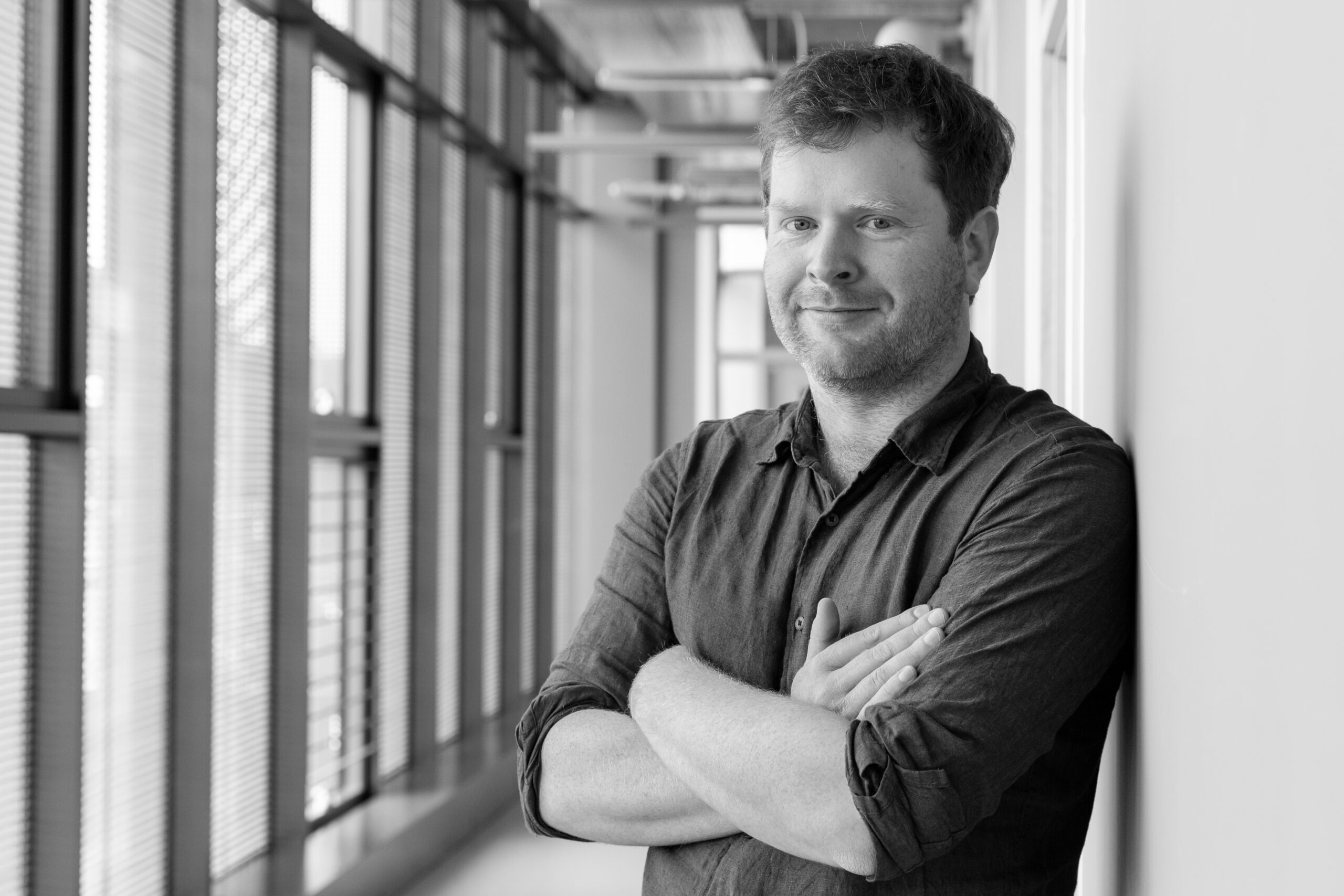
Complementing Cois Coiribe‘s article on Finding Ways to Live Well as We Age from Prof Abhay Pandit, Founding Director of CÚRAM, this spotlight feature on Dr Andrew Daly explores his unique research and motivations. Read on to find out more about both his academic insight as well as his vision for the years to come.

Dr Andrew Daly is part of the School of Engineering, College of Science and Engineering, Biomedical Engineering and CÚRAM Research Ireland Centre for Medical Devices.
My name is Dr Andrew Daly. I am an Associate Professor in Biomedical Engineering at the University of Galway and a funded investigator at CÚRAM. I lead the Biofabrication research group, where we focus on the challenge of 3D bioprinting functional human organs, with a particular focus on the heart. Our team is composed of talented researchers from diverse fields, including biomedical engineering, biomaterials, computer science, biotechnology and stem cell biology. This interdisciplinary approach is essential for tackling the scientific challenges inherent in bioprinting a complex organ like the human heart. Currently, our group includes four postdoctoral researchers, six PhD students, and one visiting Master’s student, all working on projects that address different scientific aspects of organ bioprinting.
My own journey in this field started with a Bachelor of Mechanical Engineering from Trinity College Dublin in 2013, followed by a PhD in Biomedical Engineering in 2018. My PhD project focused on bioprinting biological joint prostheses derived from stem cells. I then moved to the University of Pennsylvania in Philadelphia for a postdoctoral fellowship, where I honed my skills in biomaterials engineering. After receiving an American Heart Association postdoctoral fellowship grant, I switched focus to bioprinting of heart tissues. In 2021, I returned to Ireland to establish my independent research group at the University of Galway and CÚRAM.
My research focuses on 3D bioprinting functional human heart tissue. This is a challenging goal, as the heart is an incredibly complex organ with an intricate 3D anatomical architecture and over 11 major cell types.
To tackle this, we’re taking a unique developmental approach. Rather than attempting to directly bioprint the fully formed adult heart in all its complexity, we’re mimicking how the heart forms in the embryo. We begin by bioprinting simplified heart tubes, the initial structure that emerges in the embryo. Then, using novel bioengineering techniques, we are attempting to guide these tubes to twist and bend into the four-chamber structure found in the mature heart, similar to the natural shape morphogenesis of the heart. We’ve recently discovered that specific shape-changing processes can improve the beating function of the heart cells within our bioprinted tissues, which is a very exciting finding. This work is supported by the European Research Council and CÚRAM.
In parallel, we’re developing AI-powered 3D bioprinting technology. Current bioprinters are prone to errors, which is a major problem when working with expensive biomaterials and cells. To address this, we’ve created a novel bioprinter with real-time error correction capabilities. This system uses cameras and sophisticated machine learning algorithms to monitor the printing process and automatically detect and correct any print errors, enhancing the precision and reproducibility of our bioprinted tissues. This project is funded by the Research Ireland National Challenge Fund.
Within the next 5 years, I hope to see significant advancements in the protocols for differentiating induced pluripotent stem cells (iPSCs) into various heart cell types. Currently, we can generate ventricular cardiomyocytes – one of the cell types responsible for the heart’s beating – with relative consistency. However, protocols for producing the other major cardiac cell types, including atrial cardiomyocytes, fibroblasts, vascular cells, and neuronal cells, are more challenging to implement. More reliable iPSC differentiation protocols will be required before we can attempt to 3D bioprint a fully functional human heart.